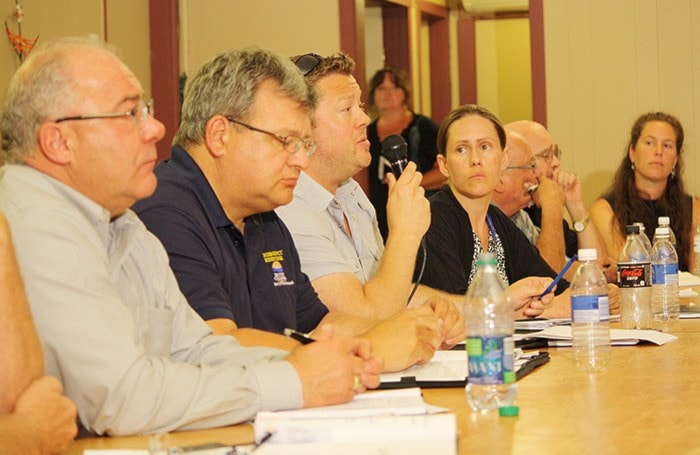Interior Health says water samples taken from the Slocan and Kootenay rivers following last month's jet fuel spill into Lemon Creek have borne out their expectations that most of the fuel would disappear within seven to ten days.
"We expected the material would largely evaporate and the majority of the rest would mix with river water and move downstream," Dr. Andrew Larder, senior medical health officer, told a media conference call this afternoon. "We thought the risk of groundwater contamination would be very low with this product. The results released today confirm those assumptions."
No surface water samples have tested positive for fuel contamination since August 1, Larder added, and samples collected from at-risk shallow wells downstream of the spill site have not detected any fuel product either.
A do-not-use order was issued for the three waterways on July 26, shortly after an Executive Flight Centre truck carrying jet fuel for helicopters batting a wildfire on Perry Ridge took a wrong turn onto a forest service road and overturned into Lemon Creek, spilling 33,000 litres. The restrictions were lifted incrementally between August 6 and 9.
Larder says despite remaining pockets of fuel, he's confident the rivers are safe for consumption and recreation. He said Interior Health is not recommending everyone get their water tested.
"We have told people and continue to tell them if they have followed flushing directions for their water published by Interior Health and there is no detectable fuel smell, the water is safe to drink. If they can still detect the smell, we ask them to call us so we can assess their system."
Geoff Hughes-Games with the Ministry of Agriculture also said tests conducted on eight properties all met regulatory standards for use of the soil for crops or other agricultural purposes.
The data released today and published on the Ministry of Environment's website is based on 199 surface water samples, 75 river sediment samples, and eight samples from groundwater wells, according to senior environmental protection officer Brad McCandlish. It was processed by environmental science consultant SNC Lavalin with the ministry's guidance.
Asked how bad things were immediately following the spill, McCandlish said in some cases the amount of fuel in the water was four times acceptable limits, and near the crash site "quite a bit higher than that" up to three days after the incident.
McCandlish, who has been working full-time on the response for the last three weeks, said dead juvenile fish and a "handful of birds" have been recovered, but "no other wildlife that was deceased or in distress." Despite suggestions in a class-action lawsuit that the spill caused an ecological "dead zone," McCandlish said he has observed both fish and wildlife "to a significant degree."
Executive Flight Centre senior vice-president Wayne Smook said the company will be looking at ways of preventing a similar accident, but couldn't provide specifics. "All the information we received will be reviewed," he said. "We will be changing operational procedures for sure."
Smook also said that while "a small army" continues to clean up the river, they will move to long-term monitoring once the province has approved their plan.
